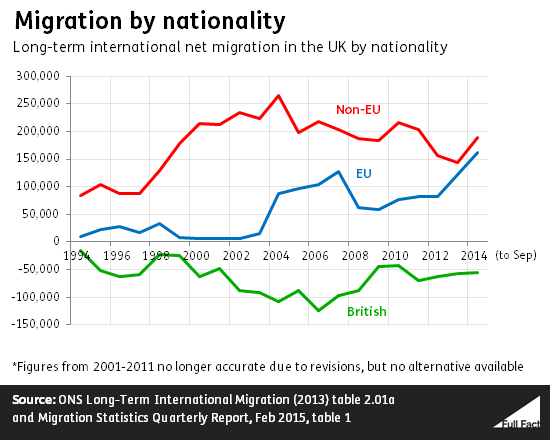Clash of the manifestos: the scale of immigration
"Non-EU migration cut by 13 per cent—and economic migration from outside the EU capped"—Conservative manifesto
"Britain has seen historically high levels of immigration in recent years"—Labour manifesto
These claims aren't flatly contradictory, but they paint very different pictures of recent migration trends—can it be described as "cut", "capped", and also "high"?
Labour is right that the overall picture is of historically high immigration. The difference between this and emigration is now running at about 300,000 a year and has typically been above 200,000 since the mid-noughties.
Before the millennium, very rough estimates show net migration barely reaching 20,000 as an average over a decade, and was often negative—when more people left the country than came in.
While Labour's manifesto speaks of high levels of immigration "in recent years", the large increases began in the late 1990s.
Neither net migration nor immigration of non-EU nationals has fallen by 13% since the election, comparing to the closest available period: the year to June 2010.
The 13% claim could be referring to either the 13% reduction of non-EU immigration from its peak in 2011, or it could be in relation to the 13% reduction in non-EU net migration from the year ending September 2010 to the same point four years later. Neither of these is an obvious interpretation from what the Conservatives have said.
Meanwhile non-EU skilled labour immigration was capped by the government at 21,700 in 2011 and this has been renewed each year since, although the number of applications has consistently fallen below the limit anyway.
